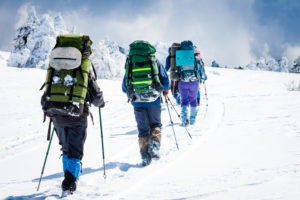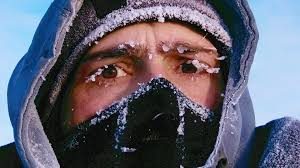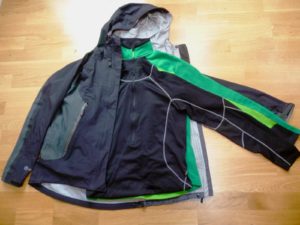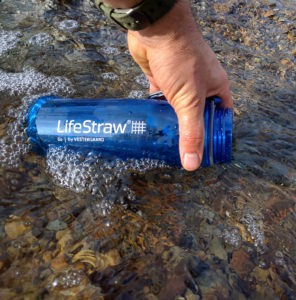
At Mainstream Adventures we love hiking, camping, basically anything outdoors. In fact we spend almost all our time on a trail, or in a canoe, or on a bike, or a ski slope, however during the winter months we have to take a few precautions before we head out. Here is a few pointers to get you started hiking in the freezing cold.
Proper Planning

Like any outdoor adventure, winter hiking takes planning. First, you need to know your limitations and those of others in your party. A 10 mile hike might be fine for some, but not everyone will be able to handle that. Carefully study maps of the trail in which you plan to hike so that you are familiar with the area. Carry a day pack containing essential items, such as snacks, and extra clothing. Always let others know where you will be going and when you plan to return. If you are hiking off-trail, this becomes even more important. In such a case, it is important that you also leave an itinerary with a friend or family member that includes your destination and when you are scheduled to return.
Maps, GPS and Compass

When hiking, use your GPS (Global Positioning System) and compass. If there is snow on the trail, it may become hard to follow, so trust these instruments to keep you on track. Because it operates off of satellites, GPS can be affected by tree cover and weather conditions, but a compass is almost always reliable if you know how to use it. In addition to other navigation aids, you will need good maps of the area. Even if you don’t plan to rely on them for navigation, they can add enjoyment on your hike, because they will show important features and sites that you might otherwise miss. Maps can also show you the most practical route out of an area in an emergency.
Dangers of Hypothermia

The main thing you will want to protect yourself against while hiking or pursuing any cold weather activity is hypothermia. Hypothermia is a condition where your core temperature drops below 95 degrees. On a wet, windy day, hypothermia can strike if you don’t have enough clothing, even in air temperatures as high as 50 degrees. It can also happen if you are in water that is 60-70 degrees. The obvious solution to prevent or reverse hypothermia is to make sure you have warm, dry clothing when the weather gets cold. Always be prepared for wet weather conditions.
Layering

Proper layering of clothing prevents excess sweat and moisture build up, which can chill you under winter conditions. Start with a moisture wickening base layer against your skin. Modern undergarments made of breathable synthetic fabric fit the bill. These can be had in long or short versions. If you prefer undergarments made from natural fabrics, silk is a great choice, but it is expensive.
Next come your pants and shirt. In cold weather, wool works great for both, but it is heavy and some people don’t like the feel of wool on their skin. In this case, you can again opt for synthetics. I personally like wool pants over synthetic long underwear for warmth. Wear a light breathable long sleeve shirt on top.
Keep your feet warm and prevent blisters. Include synthetic socks with wool hiking socks on top. Make sure your footwear is broken in before a long hike.
If conditions call for outerwear, you can wear a wool or fleece sweater. If it warms up, remove it and place it in your pack, so that you don’t sweat too much. Depending upon conditions, your outer garment could be a wind and water-resistant outer shell from Gore-Tex or a lightweight goose down vest or jacket. Mix the top garments as needed. You may want to also bring along gloves or a scarf. Choose a material like silk, synthetic or cashmere that won’t irritate the neck. Top it all off with a wool or synthetic watch cap.
Proper Hydration

You may not crave water as much when hiking in winter, but your body loses a significant amount through breathing, sweating and urination, and it has to be replenished. Be sure and drink plenty of water. I recommend carrying a hydration pack. There is no easier way to transport drinking water on the trail.
Snacks

Carry some snacks to keep your energy levels high. High carbohydrates , high fat combinations, especially those that contain dried fruit, nuts, and peanut butter, are popular, but tailor these to your specific dietary requirements. Always bring along a little more than you think you’ll need. If you don’t eat them, you can just save them for your next outing.
Contingency Plan

As with any outing, you must expect the unexpected. You will most likely be hiking in a remote area. In such areas, cell phone service may be spotty at best, and in the event of an emergency, you could be on your own until help arrives. A charged cell phone with an extra power source is important, but also carry a day pack containing items to help you survive the elements. A solar sleeping bag, a wool blanket, a poncho, and Hammock are just a few of the items i suggest.
. At the very least, carry a jacket, some windproof/ waterproof matches and a sharp knife to make kindling and perform other tasks as needed.
Winter Hiking can be very rewarding and offer new views on your favorite trails. But it can also be a devastating experience if you are not properly prepared. Happy trails!!